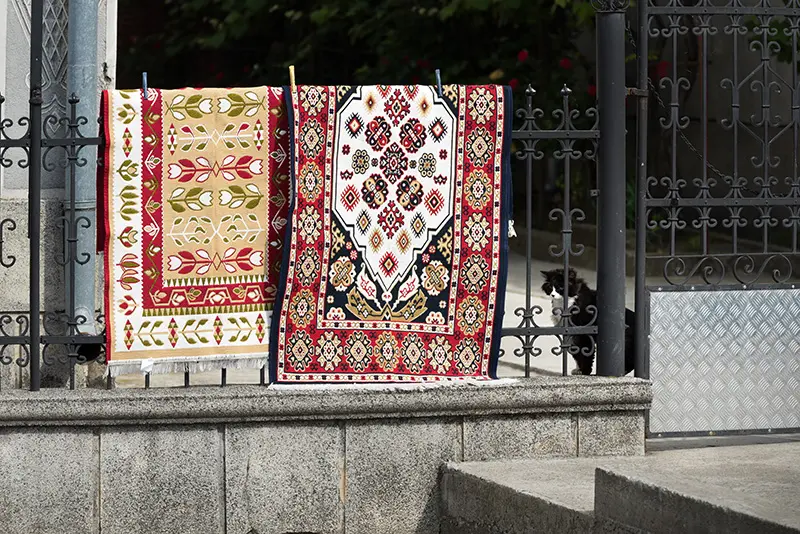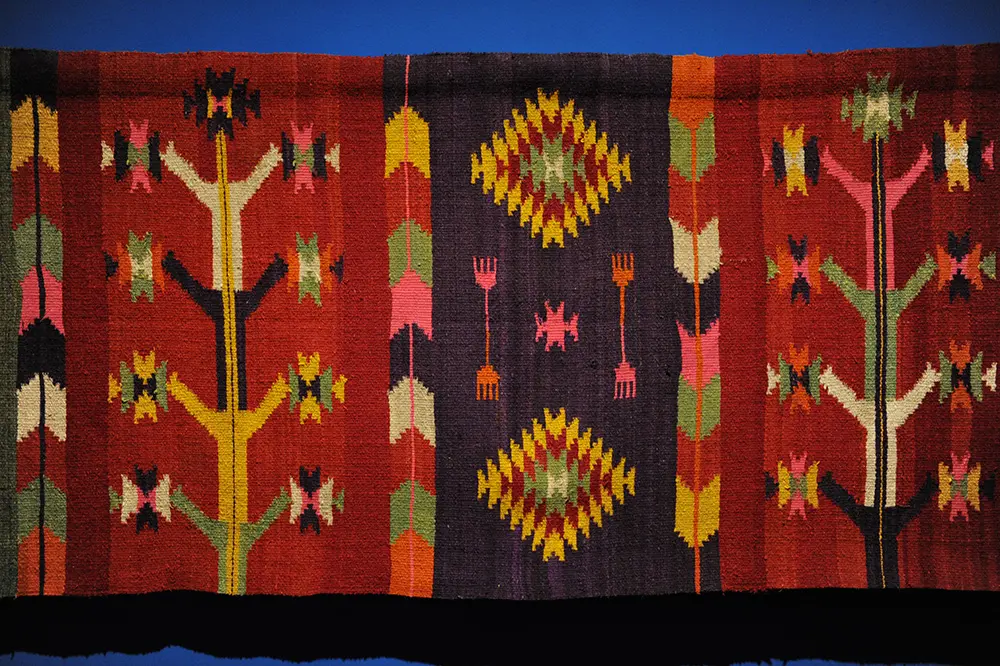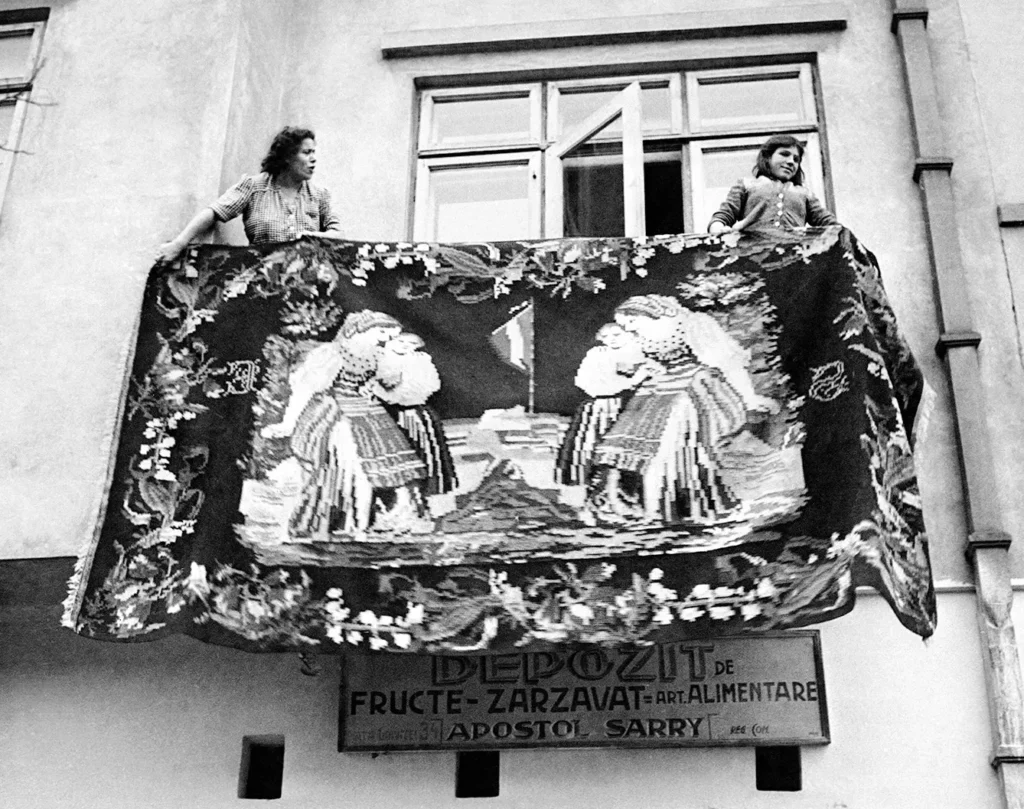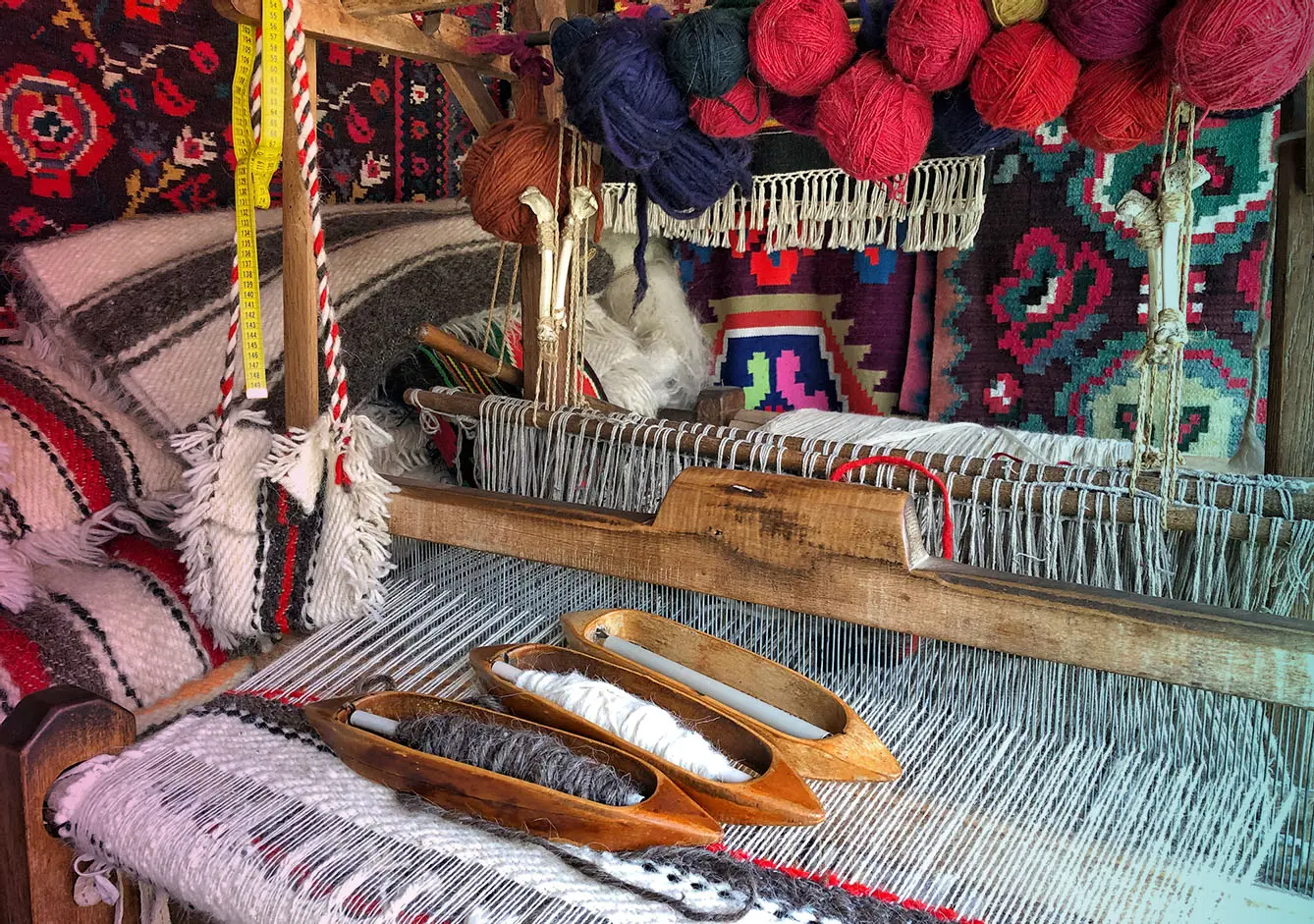Be it happiness, sadness, gatherings, or farewells, Romanians used to celebrate everything with, you guessed it, a rug. But not just any rug – it has to be a traditional, hand-made one. The craftsmanship was included on UNESCO’s List of the Intangible Cultural Heritage of Humanity as an “expression of creativity, identity, and tool for social cohesion.”



Behind all these fancy words is one idea, that of the Romanian spirit. But it wasn’t always like that, and at first, this very important textile piece was nothing more than a requisite for the house. Its meaning shifted from a practical item to a unique token of love and gratitude.
How Romanian rugs are made
From the oldest times to our modern days, rug-making has always been an important and special activity for Romanian women. Starting with the preparation of the material and ending with the crafting of the rug using vertical or horizontal loops, the entire process was and continues to be motivated by the pure desire of the maker to transmit strong emotions to the people they love. These rugs were a unique addition to the bride’s dowry, which made them even more significant in the Romanian household.
The use of intricate design, original patterns, and one-of-a-kind methods were the elements that brought uniqueness to each piece, as every craftsmanship left not only a personal mark on their work but that on their region’s beliefs and customs. Just by looking at the patterns designed into the rug, one can identify where it was made and whether or not there was a special meaning attached.
A woven treasure
Rugs represent more than artisanal craft and skill; they embody the deepest and most sincere emotions of love and gratitude. Each row of the rug is carefully looped so it can carry the pure passion of its maker everywhere. Today, they represent more than a piece of textile whose role was, back in the day, to provide isolation to homes or serve as a decorative object.
Their popularity was, nonetheless, great, even in the times long past. You could find rugs in the most respected and influential houses, palaces, monasteries, and churches. This craft art went from being a practical object to a decorative one and now to an absolute piece of art treasured not only for its complex making process but for its meaning that it continues to carry generation after generation. In Romania, rugs are not something you step on; they are a special piece of work, craftsmanship, and dedication that beautifies not only the houses of the people but their souls as well.







